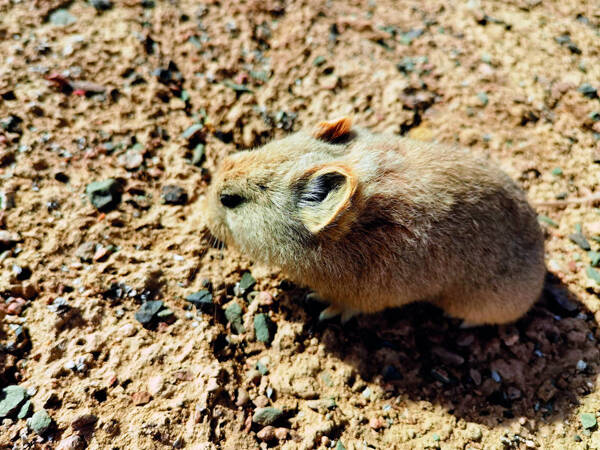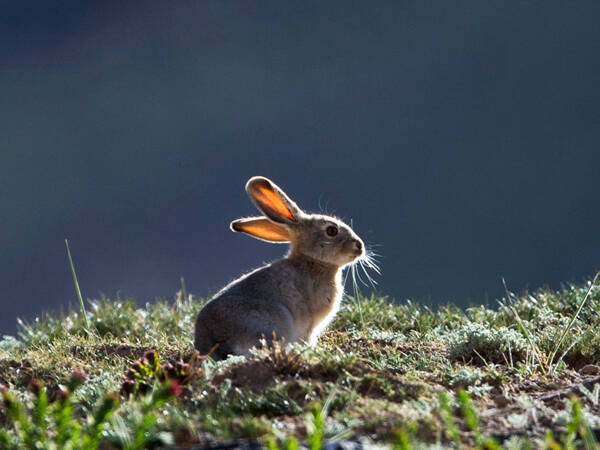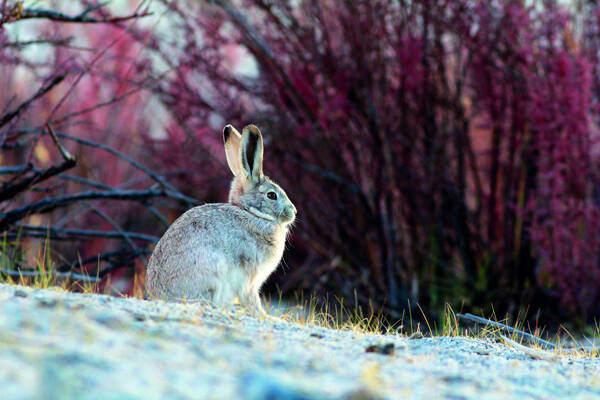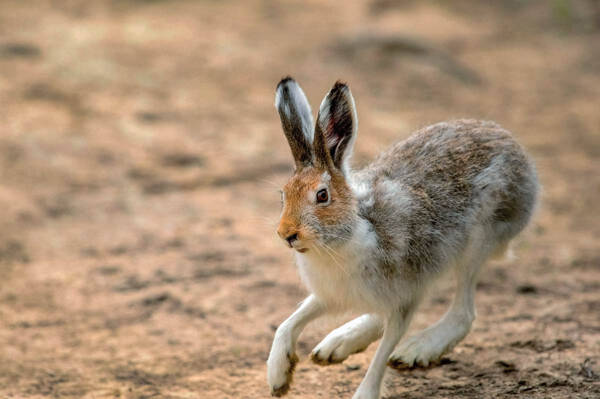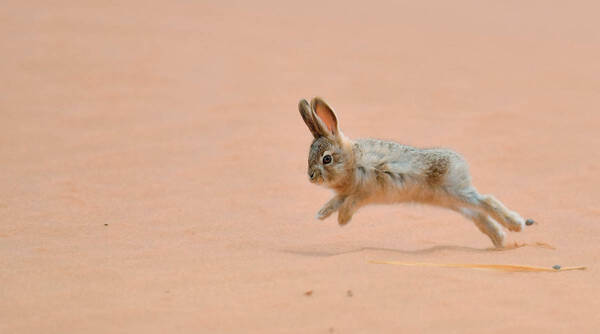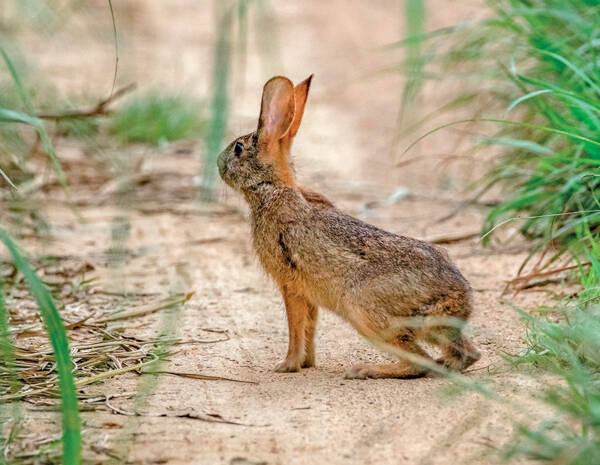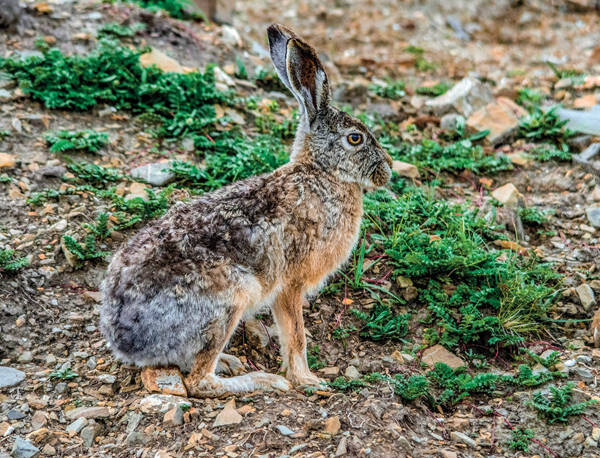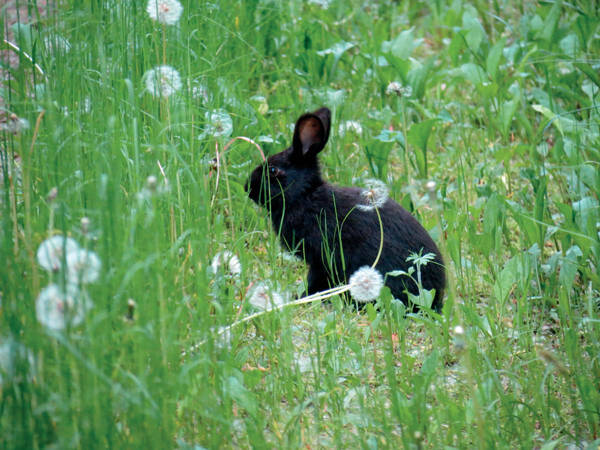Ochotona dauurica
IUCN
LCBasic Information
Scientific classification
- name:Ochotona dauurica
- Scientific Name:Ochotona dauurica,Rabbit, rabbit, crying rabbit, Mongolian pika, Dahur pika
- Outline:Lagoiformes
- Family:Lagomorpha Ochotonidae Ochotona
Vital signs
- length:150-200mm
- Weight:73-170g
- lifetime:
Feature
The body color is lighter, sandy brown, the ears are large and round, and the upper lip is split vertically like a rabbit.
Distribution and Habitat
In China, it is mainly distributed in western Inner Mongolia, Shanxi, Ningxia, Gansu, Liaoning, and parts of Hebei. Abroad, it is mainly distributed throughout Mongolia, slightly extending to Russia.
Daurian pika is a warm and dry animal in eastern Mongolia, living in plateau hills, typical grasslands and mountain grasslands. Grasslands of Artemisia communities are the most common in the Hexi Corridor. The habitat often has short shrubs composed of Potentilla and Caragana. In the eastern section of Qilian Mountains, there are many sunny slope meadow grasslands with Cyperaceae as the main community species. For example, in the grasslands of the terraces in the front of Qilian Mountains in the south of Shandan, the number of pikas is large and the density is high, which has caused serious damage to the grassland. They dig holes on the ridges next to the roots of Caragana and Achnatherum, on the edges of hillside farmlands, grasslands, and plateaus.
Appearance
The skull is large and slightly humped, but not as humped as in the black-lipped and Koch's pikas. In summer, the fur on the back is yellow-brown to straw-grey; in winter, the fur is thick and lighter, sandy grey or sandy yellow to greyish yellow. The ventral side is white or off-white. There is usually a beige patch on the chest. On the sides, the color is lighter. The tips of the fur are beige. The ears are dark brown with white edges. The front and rear feet are hairy, and the claws are almost hidden in the fur. This feature is similar to the black-lipped pika. The whiskers are relatively long, 40-55mm. The incisor and palatine foramina are merged into one large foramen, and there is no oval foramen in the frontal bone.
Details
The Daurian pika belongs to the subgenus Ochotona, which was once included in the black-lipped pika (Ochotona curzoniae), but its independent species status was later accepted. There are 3 subspecies and 5 synonyms. Therefore, the classification within the species is rather chaotic. It is a common species in the northern desert steppes and grasslands. It is similar to the black-lipped pika in ecology and is broadly herbivorous.
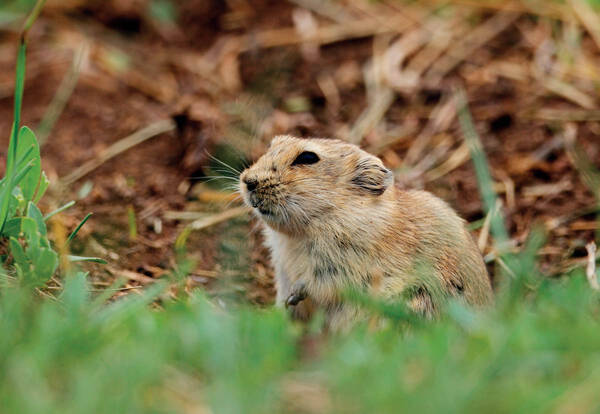
The Daurian pika is a herbivorous animal that mainly feeds on plant roots, stems, and leaves, and occasionally on crop seeds. In summer, it mainly feeds on Gramineae, Cyperaceae, Artemisia frigida, and Caragana, and also feeds on seedlings of wheat, potatoes, and alfalfa; in autumn, it harms fruits. In the growing season, it mainly feeds on the green parts of plants. It likes to eat the stems and leaves of plants the most, such as Artemisia variegata, Allium bifidum, and Potentilla bifidum. An adult pika eats 59.85g of fresh grass per day on average, and eats about 21.85kg of fresh grass per year. It has the habit of storing grass from August to October every year. It first bites the grass off, then drags it to the entrance of the cave and piles it into small piles, each pile weighing 3-5kg. After drying, it drags it into the cave for storage for winter consumption. When there are many pikas, nearly a thousand piles of grass can be seen in an area of 2 to 3 square meters. The main plants stored are Potentilla chrysanthemum, Artemisia ferrugaceae, Artemisia argyi, Kochia scoparia and Artemisia frigida.
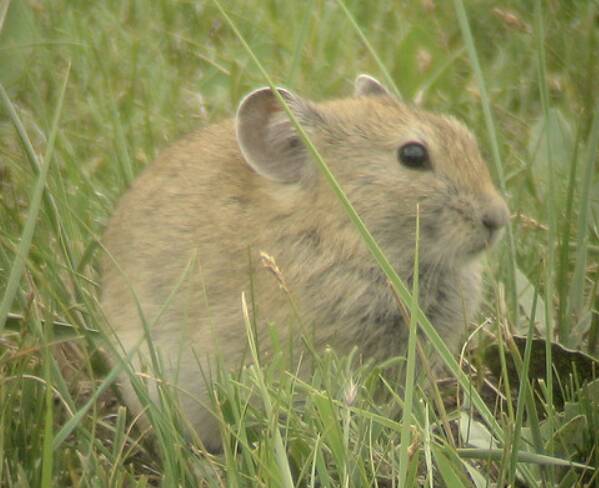
Daurian pikas are active during the day and do not hibernate. They are active all year round. When the climate warms up in spring, the grass stored in the previous winter has been eaten up. In order to find green plants, the range of activities will expand, and the radius of activities will be 10-20m or more. It is not hot at noon in spring, and the daily activity is unimodal. In summer, the sunshine increases and the climate is hot. In order to avoid exposure to the sun, activities will stop at noon. They go out from 4:30-10:30 in the morning and 17:30-20:00 in the afternoon. Due to the abundance of food, the range of activities is smaller than in spring. In autumn, the climate becomes cooler, and the sunlight at noon is not as strong as in summer. The activity becomes single-peaked again, which is the longest season of the year. In preparation for storing grass, the warehouse is cleaned, and the grass starts to store grass when it turns from green to yellow. In winter, the time spent outside the cave is shorter, and it is still active when the snow accumulates. There is a passage dug under the snow, and the cave entrance is opened on the snow surface. In the morning when there is no wind, they like to bask in the sun at the cave entrance. Sometimes, they also move on the snow, but the general range of activity does not exceed 10m. They will immediately run back to the cave when there is a little wind and snow.
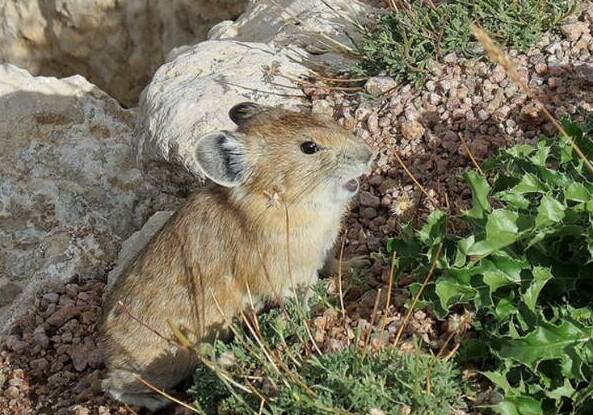
Daurian pikas live in groups and caves. The cave system can be divided into simple caves (summer caves) and complex caves (winter caves). Most simple caves have only one hole and no warehouse. Complex caves have 3-6 circular to oval holes with a diameter of about 5-9cm. There are spherical feces near the hole. Fresh feces are grass yellow, and old feces are gray-brown. There is a mesh runway about 5cm wide between the hole openings. The tunnel at the entrance is at an angle of 30-40° to the ground and extends about 50cm before being parallel to the ground. The tunnel has a complex structure with many bends and a total length of about 3-10m. There is a nest in the middle of the tunnel, which is covered with broken grass and is flat. There are 1-3 warehouses not far from the entrance.
The reproduction of Daurian pikas varies depending on the region and altitude. Generally, they reproduce 2 or 3 times a year, from April to July (or from March to September) of the same year. The reproduction rate is highest in June, with a gestation period of 15-20 days, and 5-12 pups per litter, with a maximum of 14 pups. After 7 days, the pikas can move outside the cave with the mother pika. Female pups are sexually mature at 21 days and have strong reproductive capacity.
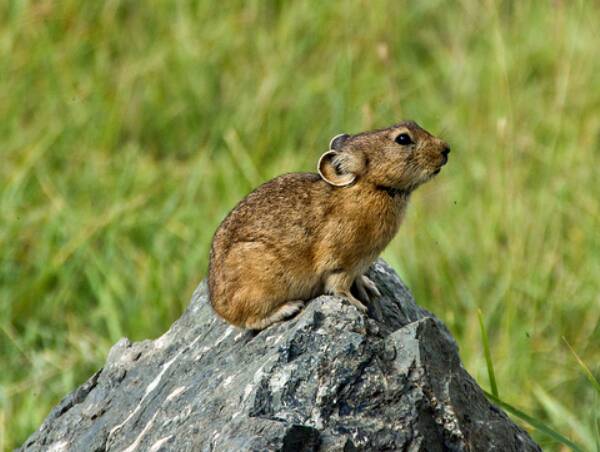
The population of Daurian pikas fluctuates greatly, and when the population is large, it can cause harm to the grassland. The harm to the grassland is mainly manifested in the following aspects: Daurian pikas mainly feed on crops and forage, compete with livestock for grass, reduce grass production, and cause certain harm to agriculture and animal husbandry; they are gregarious animals, their burrows cover a large area, the stolen mounds cover the grassland, and the rat paths on the ground are crisscrossed, and no grass grows on them. When the density is high, it causes harm to the grassland. The tunnels are shallow from the ground, often causing livestock to break their legs when passing through; tunnels in hillside areas often cause soil erosion, and some places become barren gravel land. At the same time, it is also an epidemic source animal, a transmitter and storage of plague bacteria, which can spread the disease and cause harm to livestock and humans to some extent.

